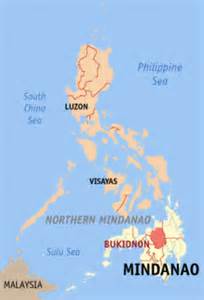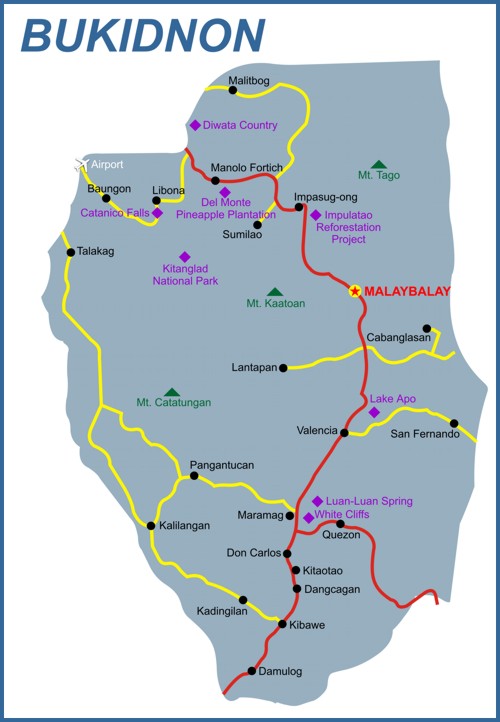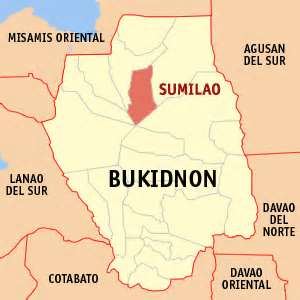
-
МјРЇСІИёСЖШИМі
-
 И№ОЫ КИОЫ Йъ ЗЛЦЎЧЯБт~ ИЎСЖЦЎ ПЙОрБюСі
И№ОЫ КИОЫ Йъ ЗЛЦЎЧЯБт~ ИЎСЖЦЎ ПЙОрБюСі 89,457
89,457 -
 [ЧЪИЎЧЩ ММКЮ] ФЋИ№ХзНК ПЉЧр 100Йш СёБтБт
[ЧЪИЎЧЩ ММКЮ] ФЋИ№ХзНК ПЉЧр 100Йш СёБтБт 48,896
48,896 -
 ИЖДвЖѓ НУГЛ - ИЎРп АјПјСЄКИ. (ЛчСј 16Рх ЦїЧд)
ИЖДвЖѓ НУГЛ - ИЎРп АјПјСЄКИ. (ЛчСј 16Рх ЦїЧд) 30,789
30,789 -
 ММКЮРЧ СіПЊСЄКИ15,529
ММКЮРЧ СіПЊСЄКИ15,529 -
 ИЖДвЖѓ БйБГ - ЕћАЁРЬЕћРЬ ПЉЧр СЄКИ14,341
ИЖДвЖѓ БйБГ - ЕћАЁРЬЕћРЬ ПЉЧр СЄКИ14,341 -
 [ЧЪИЎЧЩ ММКЮ/ИЗХК] ШЃХк МїЙк ПфБн Йз СЄКИ13,319
[ЧЪИЎЧЩ ММКЮ/ИЗХК] ШЃХк МїЙк ПфБн Йз СЄКИ13,319 -
 КИЖѓФЋРЬРЧ И№Еч И№НРРЛ КММі РжДТ ЛчСјУИ.13,132
КИЖѓФЋРЬРЧ И№Еч И№НРРЛ КММі РжДТ ЛчСјУИ.13,132 -
 ИЖДвЖѓ БйБГ - ЦХЛѓЧб ЦјЦї ПЉЧрСЄКИ12,831
ИЖДвЖѓ БйБГ - ЦХЛѓЧб ЦјЦї ПЉЧрСЄКИ12,831 -
 [ММКЮ-ЙшМБТјРх] МБЙкШИЛч РќШЙјШЃПЁПф~12,445
[ММКЮ-ЙшМБТјРх] МБЙкШИЛч РќШЙјШЃПЁПф~12,445 -
 ИЖДвЖѓ СіПЊ(ПЁИЃЙЬХИ -ИЛЖѓХз)РЧ СіЕЕ/ЧбБЙ РННФСЁ/МюЧЮИє12,112
ИЖДвЖѓ СіПЊ(ПЁИЃЙЬХИ -ИЛЖѓХз)РЧ СіЕЕ/ЧбБЙ РННФСЁ/МюЧЮИє12,112
Bukidnon, Philippines

Bukidnon (/buЫˈkɪdnɒn/; Cebuano: Probinsiya sa Bukidnon; Filipino: Lalawigan ng Bukidnon) is a landlocked province of the Philippines located in the Northern Mindanaoregion.[3] Its capital is Malaybalay City. The province borders, clockwise starting from the north, Misamis Oriental, Agusan del Sur, Davao del Norte, Cotabato, Lanao del Sur, and Lanao del Norte. According to the 2010 Census of Population by the National Statistics Office (NSO) the province is inhabited by 1,299,192 residents. [4]
The name "Bukidnon" means highlander or mountain dweller. Bukidnon is considered to be the food basket of Mindanao. It is the major producer of rice and corn in the region. Plantations in the province also produce pineapples, bananas and sugarcane. Bukidnon is the home of Mount Dulang-dulang, the 2nd highest mountain in the Philippines with an elevation of 2,938 m located in Kitanglad Mountain Range.[5] Mount Kitanglad (2,899m.), Mount Kalatungan (2,860m.), Mt. Maagnaw (2,742m.), Mt. Lumuluyaw (2,612m.) and Mt. Tuminungan (2,400m.), the 4th, 5th, 8th, 17th and 30th highest mountains in the country respectively, are also found in the province. [6]
There are no seaports and airports in the province. To get to Bukidnon, one must travel by land from Cagayan de Oro City or from Davao City.
History
Political History
Bukidnon became a part of Misamis in the latter part of 1850. The whole area was then called Malaybalay and the people were known as Bukidnons (highlanders or mountain dwellers). The Philippine Commission, then headed by Commissioner Dean C. Worcester, Secretary of Interior, proposed the separation of Bukidnon from Misamis Province. On August 20, 1907, the Philippine Commission Act No. 1693 was enacted the Province of Agusan and sub- province of Bukidnon. Bukidnon became a regular province on March 10, 1917 by virtue of the creation of the Department of Mindanao and Sulu under Act 2711.
In 1942, invading Japanese troops entered Bukidnon. Mt. Capistrano was a civilian evacuation area in the World War II. In 1945, the province was liberated from Japanese occupation by Filipino and American troops with the aid of Bukidnon-based Filipino guerrillas during the Second World War.
Cultural history
According to oral history of the indigenous people of Bukidnon, there were four main tribes in Central Mindanao: the Maranao who dwell in Lanao del Sur, and the Maguindanao, Manobo and Talaandig who respectively inhabit the eastern, southern, and north-central portions of the original province of Cotabato. When the civil government divided central Mindanao into provinces at the turn of the 20th century, the groups included in the province of Bukidnon are the Talaandig and the Manobo. The Bisayans, Cebuano, Boholanos and Ilonggos migrated into the province followed by various groups from Luzon, namely, the Ilocanos, Batangueños, the Igorots and the Ivatans. All contributed massive acculturation among the indigenous tribes. Most of those who moved to the mountains and forest continued to hold on their ancestorsт cultural heritage. The wide variety of Filipino groups now thrives in the province and contributed immensely in the socio-economic development.

Geography
Location
Bukidnon is a landlocked plateau in North Central Mindanao. It is bounded on the north by Misamis Oriental and Cagayan de Oro City; on the south by North Cotabato, Davao del Sur and Davao City; on the east by Agusan del Sur and Davao del Norte; and west by Lanao del Sur. It lies between parallels 7ТА25' and 8ТА38' North latitude and meridians 124ТА03' and 125ТА16' East longitude. Malaybalay City, the capital town, is about 850 km by air from Manila and 91 km by road from Cagayan de Oro City.
It has two important landmarks, Mt. Kitanglad and Pulangi River. Mt. Kitanglad is 2,899 m above sea level. Pulangi River, on the other hand, traverses through the northeastern and southern part of the province towards the Rio Grande of Mindanao.
Land area
The province's total land area is 829,378 hectares (8, 293.78 square km). It accounts for 59 percent (59%) of Northern Mindanao. Thirty-eight percent (38%) is alienable and disposable. The rest is classified timberland.
It also accounts for 80 percent (80%) or 34 million metric tons of the regionтs nonmetallic mineral deposits which include high grade white and red clay, gold, chromite, copper, serpentine, manganese, quartz and limestone deposits can also be found in the province.
Climate
Two types of climate prevail between the northern and southern sections of Bukidnon, The northern part is classified as belonging to Type III, that is, there is no pronounced rain period but relatively dry during the months of November to May. In the southern portion of the province, the climate is classified as Type IV with no dry season. The driest area is Baungon, while the wettest is the Calabugao plain. The climate is relatively cool and humid throughout the year.
The average annual rainfall is 2, 800 mm(112.5 inches). Just like in other parts of the country, rainfall is more pronounced from June to October compared to other months of the year. February to April are the drier months.
Temperature ranges vary with elevation. In areas lower than 500 m above sea level (m.a.s.l.), the recorded temperature range is between 20ТАC to 34ТАC. Areas with elevations greater than 500 m.a.s.l. would have temperatures ranging from 18ТАC to 28ТАC.
Relative humidity also varies with elevation, with those above 500 m having relative humidity of about 80%, while areas lying below 500 meters, 65-7 percent. Thus, the Malaybalay-Impasug-ong area and those around the volcanic cones approximate semi-temperate conditions and can support the cultivation of highland tropical crops.
Based on the records of climatological stations within and near the province, lithology and land form, three (3) agro-ecological zones are identified. One covers the mountainous eastern side (Central Cordillera) which is generally wet, with rainfall of about 2, 340 mm to 4, 000 mm per annum. Another covers the high altitude volcanic plains, the Malaybalay-Impasug-ong area and the footslopes of Mt. Kitanglad and Mt. Kalatungan. These areas have an annual rainfall in the range of 2, 490 mm to 3, 680 mm. The third zone covers the south-central and the north-western parts of the province, with elevations of less than 500 meters, relatively dry with mean annual rainfall in the range of 1, 700 mm to 2, 600 mm.

Bodies of water
Bukidnon is known as the watershed of Mindanao. It is endowed with six major river systems namely: Pulangi, Tagoloan, Cagayan, Manupali, Muleta, and Bobonawan Rivers. These rivers carved the landscape of the province creating numerous canyons.
The Pulangi River, considered the longest river in the province, is a tributary of the Rio Grande of Mindanao. Its headwaters are found in the mountains of Kalabugao, Impasug-ong, Bukidnon. It is the largest as well as the longest river found in the province. It covers the following cities and municipalities of the province: Impasug-ong, Malaybalay City, Cabanglasan, San Fernando, Valencia City, Maramag, Quezon, Don Carlos, Kitaotao, Dangcagan, Kibawe and Damulog.
The Tagoloan River has its headwaters in the mountains of Can-ayan, Malaybalay City. It traverses the province northwestward passing through Malaybalay City, Impasug-ong, Sumilao, Manolo Fortich, Malitbog and finally empties into the sea at Tagoloan, Misamis Oriental.
The Cagayan River watershed is found mostly in the municipality of Talakag. Its headwaters are found in the Kitanglad Mountain Range in central Bukidnon. The river flows northward through the municipalities of Talakag and Baungon. Its mouth lies at Cagayan de Oro City in Misamis Oriental, where it is the main source of potable water.
The Manupali River, a major tributary of the Pulangi River, start in the mountains of Lantapan, Bukidnon, picking up tributaries along the way from the Kalatungan and Kitanglad Mountain Ranges. It forms part of the natural boundary of the Valencia City and Lantapan. It flows eastward towards Malaybalay City, eventually joining the Pulangi River in Valencia City.
The Muleta River is found in the southern portion of the province covering the municipalities of Pangantucan, Don Carlos, Kitaotao, Dangcagan, Kibawe, Kadingilan and Damulog. It is another important tributary of the Pulangi River and flows southward. It will join the Pulangi River in the boundary of Bukidnon and Cotabato province.
The Bobonawan River, found in the municipality of Cabanglasan, is another tributary of the Pulangi River. It covers most of the parts of the municipality, flowing southward towards Pulangi River.
Aside from the relatively important river systems, various lakes also dot the landscape of the province. Pinamaloy Lake, in Don Carlos, Bukidnon, is the biggest in the province covering about 50 hectares. It was named after Barangay Pinamaloy, the place where the lake is located. Another lake is found in Pigtauranan, Pangantucan called the Napalit Lake. The lake covers an area of 36 hectares and is one of the tourist spots in Pangantucan, Bukidnon. There are 24 floating islets in the lake. The third significant inland body of water in the province is Apo Lake at Guinoyoran, Valencia City. It occupies an approximate area of 25 hectares. A man-made lake called Maramag Basin is found in Maramag, Bukidnon, which was the result of the construction of the Pulangi IV Hydroelectric Dam of the National Power Corporation (NPC) in the course of the Pulangi River.
People and culture
Indigenous inhabitants of Bukidnon are the Lumad, including the Bukidnon, Higaonon, Manobo, Talaandig. Their cultures and traditions are embodied in oral folk literature of the province which are classified into; тAntokaт (riddles), тBasahanт (proverbs or wise sayings), тKaligaт (ceremonial songs), тLimbayт (lyric poem), тSalaт (love song), тIdangdangт (ballad), тUlagingт (epic) and тNanangonт (folktales). Religion is monotheistic. They believe in one God. тMagbabayaт (the ruler of all) has minor gods and goddesses under his command (Example: тBulalakawт watches rivers and lakes, тTumpas Nanapiyawт or тItumbangolт watches the bases of the earth, night, and day).
Most of the population, however, are recent Christian immigrants from Cebu or elsewhere in the Philippine archipelago.
Festivals
The province celebrates the Kaamulan Festival, an ethnic cultural festival held annually in Malaybalay City, Bukidnon from the mid-February up to March 10, the founding date of the Bukidnon as a province in 1917. It is held to celebrate the culture and tradition of the seven ethnic tribal groups—Bukidnon, Higaonon, Talaandig, Manobo, Matigsalug, Tigwahanon and Umayamnon—that originally inhabit the province. Kaamulan comes from the Binukid word тamulт meaning to gather. Kaamulan is gathering for a purpose—a datuship ritual, a wedding ceremony, a thanksgiving festival during harvest time, a peace pact, or all of these together. The festival started in 1974 and is celebrated until now.
- ЁЄ
- ЁЄ
- ЁЄ
- ЁЄryWvMVxeet
- ЁЄryWvMVxeet
- ЁЄryWvMVxeet\'\"\\(
- ЁЄryWvMVxeetщ\'\"\\(
- ЁЄryWvMVxeet
- ЁЄryWvMVxeet
- ЁЄryWvMVxeet
- ЁЄryWvMVxeet
- ЁЄryWvMVxeet
- ЁЄryWvMVxeet
- ЁЄryWvMVxeet
- ЁЄryWvMVxeet














 ЧЪРкДхФФ ОпАЃЛѓДу ПРЧТ
ЧЪРкДхФФ ОпАЃЛѓДу ПРЧТ 12ГтПЌМг МвКёРкИИСЗ 1РЇ
12ГтПЌМг МвКёРкИИСЗ 1РЇ
 ГЛАд ИТДТ ОюЧаПј УЃБт
ГЛАд ИТДТ ОюЧаПј УЃБт
 ИЎОѓ ЧаБГ ЙцЙЎБт
ИЎОѓ ЧаБГ ЙцЙЎБт
 СжИЛПЁ ГЛАЁ ОЕ КёПыРК?
СжИЛПЁ ГЛАЁ ОЕ КёПыРК? УжАэАЁМККё РЬКЅЦЎ СёБтБт
УжАэАЁМККё РЬКЅЦЎ СёБтБт
 ЧіСіПЁМЕЕ ЧЪРкДхФФ!
ЧіСіПЁМЕЕ ЧЪРкДхФФ! ЧіСіПЁМ АЁДЩЧб
ЧіСіПЁМ АЁДЩЧб









 ЧЪРк ЦЏБо Ч§ХУ! ФСНУОюСі МКёНК
ЧЪРк ЦЏБо Ч§ХУ! ФСНУОюСі МКёНК
































